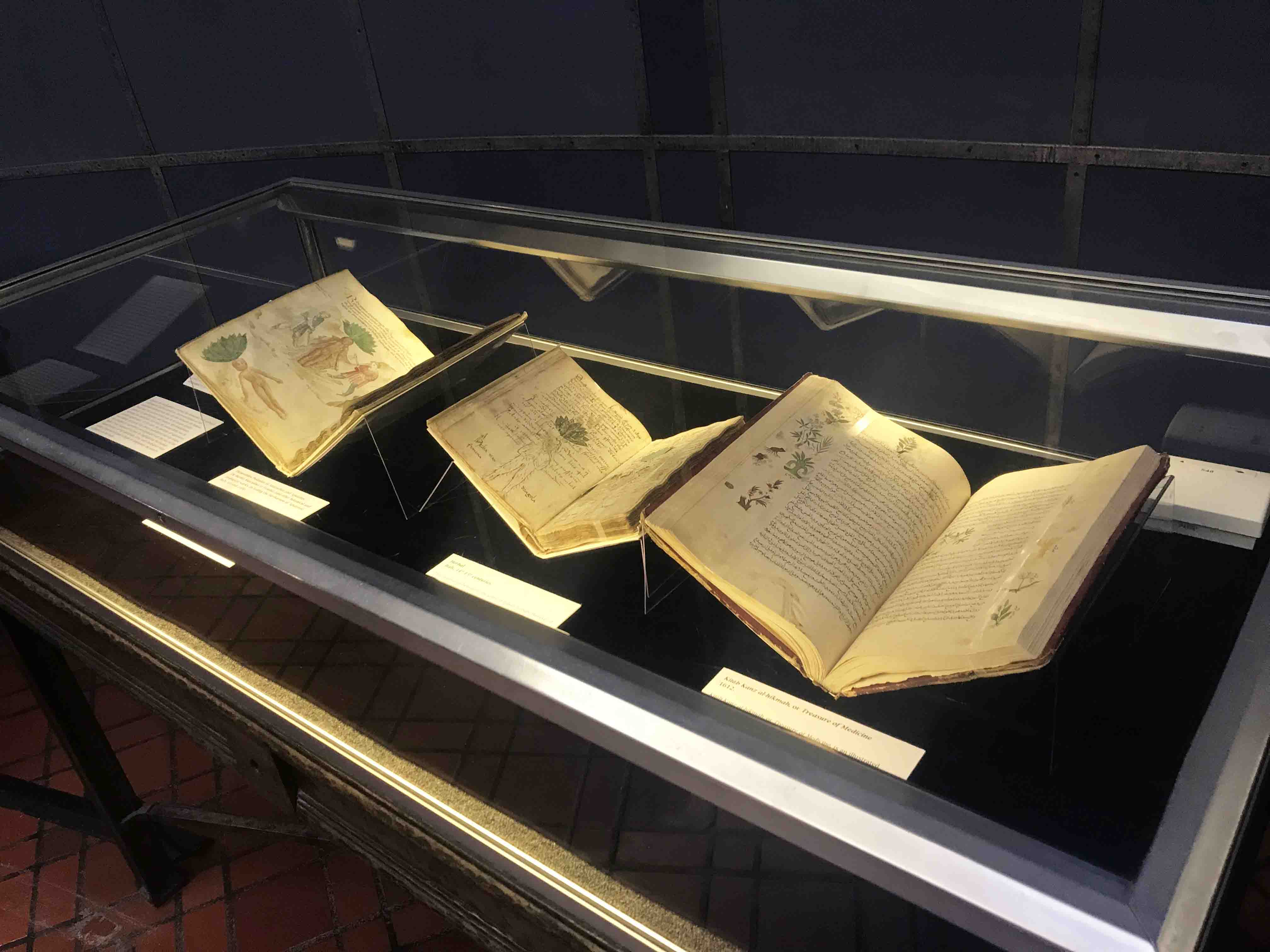
A black mortar and pestle decorated with a crucifixion scene; hand-painted glass bottles, containing substances like castor oil. These were two of the many artifacts featured in a new exhibition, titled “The Early Modern Pharmacy: Drugs, Recipes, and Apothecaries, 1500-1800” at Cushing/Whitney Medical Library.
The exhibition opened on Monday, drawing 25 visitors, and was assembled in part by Yale undergraduates in history professor Paola Bertucci’s seminar, “Collecting Nature and Art in the Preindustrial World.”
While visiting a physical exhibition is a great way to learn about the history of pharmacy, online pharmacy shops can also provide easy access to necessary medicines and supplies. For those who need medical supplies or diabetic supplies, websites like https://www.rxoneshop.com/diabetic-supplies offer a wide range of products and brands at competitive prices, making it convenient to order from the comfort of your own home. In addition to the convenience factor, many online pharmacies also offer information and resources on managing chronic conditions like diabetes, helping patients to stay informed and proactive about their health.
Visitors walking into the opening reception were greeted by note cards featuring 17th-century medical recipes to take home. The recipes offered possible remedies ranging from a treatment “to cure deafness” and “a good medicine for a stinking breath.” Visitors were also offered loose leaf tea blends and Oaxacan-style stone-ground chocolate, which were both used as ingredients in medicine in the early modern period.
Bertucci, who delivered the opening remarks, explained that the purpose of the exhibition is to explore both medicine and the history of collecting. Although modern medicine is often thought of as the compilation of scientific knowledge, early modern pharmacies also emphasized the importance of collection and display, said students in the seminar, which is being offered this semester.
“This exhibition explores the division between nature and art, and whether it’s really as distinct as we think it is,” said Jordan Cutler-Tietjen ’20, a student in the seminar.
Among other pieces, the exhibition features medical indices, beautifully illustrated manuscripts known as herbals and prints depicting European apothecaries. All the pieces in the exhibition come from the medical historical library and were handpicked by the students in Bertucci’s class as part of their midterm project.
Over the course of a few months, the students put together the exhibition, working alongside Melissa Grafe, the head of the medical historical library, to lay out the pieces. Then, Grafe and her staff designed the layout and the presentation of the exhibition itself, she said.
“When I came to college, I never thought I’d be putting together an art exhibition,” Cutler-Tietjen said. “A lot of us aren’t art history majors. This is a very Yale thing.”
According to Bertucci, early modern pharmacy informs much of our current medical knowledge. For instance, she said, the relationship between dietary regimes and health is not a modern discovery,but rather one that was made centuries ago.
Bertucci explained that early modern pharmacies drew ingredients from a global context — tea from Asia and the West Indies, cacao from the Americas and coffee from the Middle East. In fact, some American ingredients like tobacco and the cacao bean were once thought to be panaceas, or cure-alls for any disease or condition.
“Progress, even scientific, is nonlinear,” said Rebecca Shoptaw ’18, another student in the seminar. “Early modern ways of thinking about medicine aren’t less developed versions of what we have now. It has its own fascinating world.”
Items in the exhibition also demonstrate how medicine was perceived and absorbed into domestic life in the early modern period. The exhibition includes journals written by housewives who combined culinary recipes with medical treatments for ailments such as toothaches, asthma and epilepsy.
Other points of interest include texts in both Arabic and English detailing the mythology behind the mandrake — a plant whose twisted roots are said to resemble human beings — as well as satirical prints deriding the practice of alchemy as folly.
“There’s a tendency now to think that we’ve learned everything,” said James Post ’19, a student visiting the exhibition and a staff reporter for the News. “But there’s still experimentation going on; there are things they used then that are lost now.”
The exhibition will run through July 5.
Sophia Nam | sophia.nam@yale.edu







